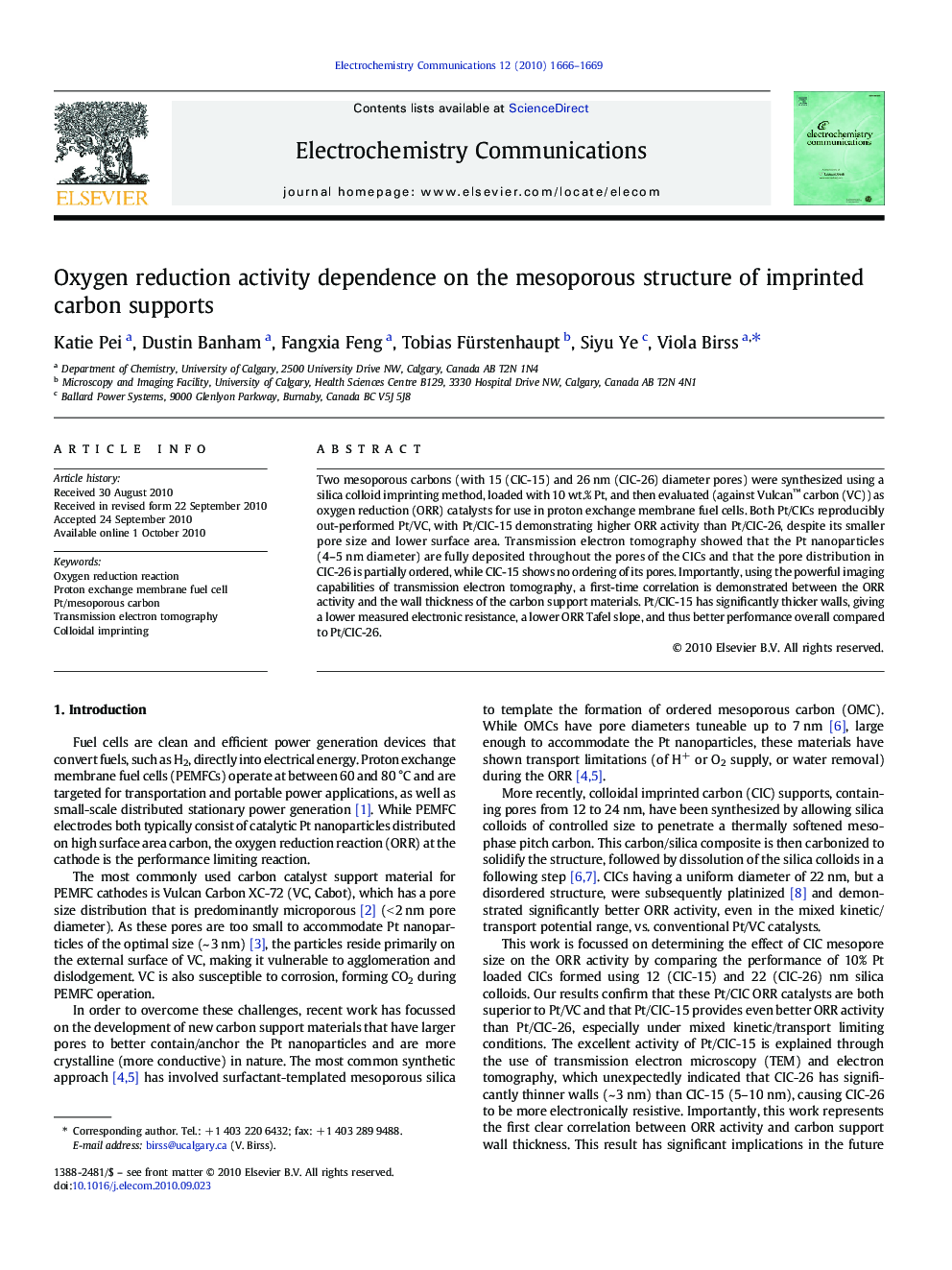| Article ID | Journal | Published Year | Pages | File Type |
|---|---|---|---|---|
| 180457 | Electrochemistry Communications | 2010 | 4 Pages |
Two mesoporous carbons (with 15 (CIC-15) and 26 nm (CIC-26) diameter pores) were synthesized using a silica colloid imprinting method, loaded with 10 wt.% Pt, and then evaluated (against Vulcan™ carbon (VC)) as oxygen reduction (ORR) catalysts for use in proton exchange membrane fuel cells. Both Pt/CICs reproducibly out-performed Pt/VC, with Pt/CIC-15 demonstrating higher ORR activity than Pt/CIC-26, despite its smaller pore size and lower surface area. Transmission electron tomography showed that the Pt nanoparticles (4–5 nm diameter) are fully deposited throughout the pores of the CICs and that the pore distribution in CIC-26 is partially ordered, while CIC-15 shows no ordering of its pores. Importantly, using the powerful imaging capabilities of transmission electron tomography, a first-time correlation is demonstrated between the ORR activity and the wall thickness of the carbon support materials. Pt/CIC-15 has significantly thicker walls, giving a lower measured electronic resistance, a lower ORR Tafel slope, and thus better performance overall compared to Pt/CIC-26.
